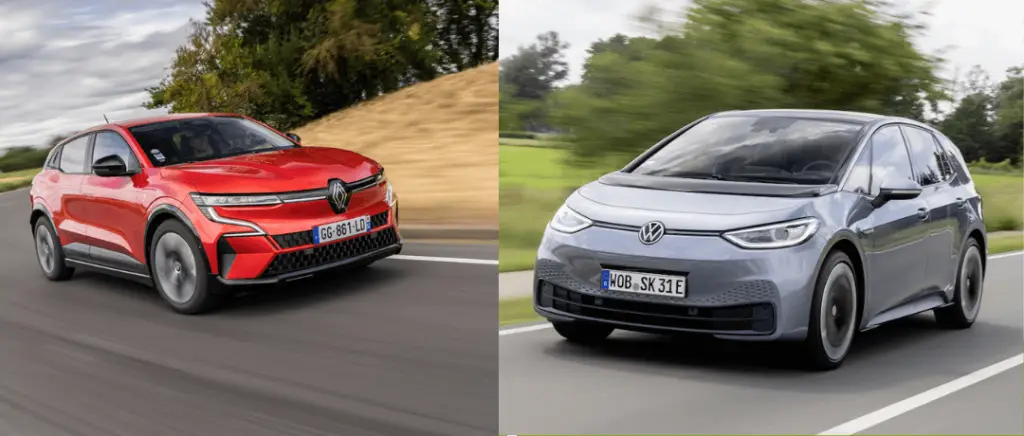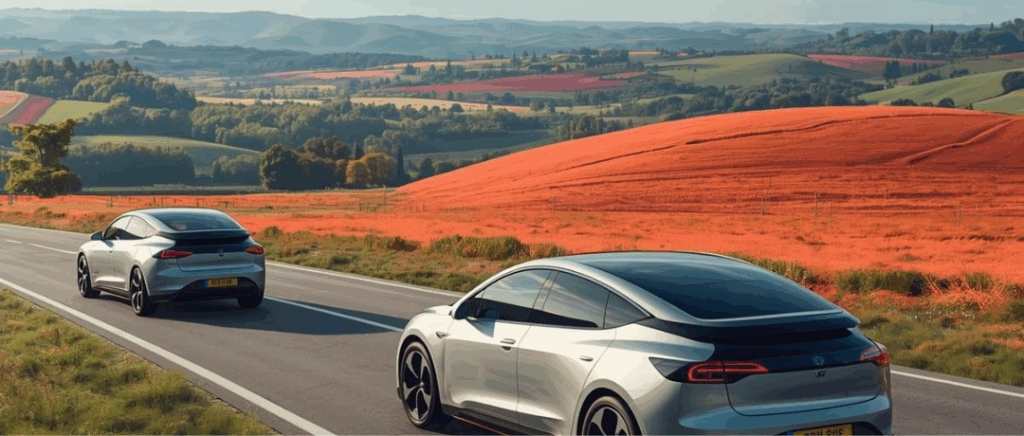Compare these two electric cars
With our tool electric vehicle comparator you can compare the :
Monday to Friday 9am - 12.30pm - 2pm - 7pm
Renault Megane e-Tech vs Volkswagen ID.3: convincing performance
La Renault Megane E-Tech has nothing technically in common with previous Mégane models, and uses the CMF-EV alliance, which also underpins the SUV coupé Nissan Ariya. The electric vehicle is available in two sizes battery (40 kWh and 60 kWh). Prices for the electric Megane start at 42 900 €benefiting from environmental bonus from 5000 € not deducted and conversion premium up to 5 000 €.
Battery capacity
Volkswagen Group has made a major entry into e-mobility with the Volkswagen ID.3. Before that, only electric variants of existing models (e-up, e-Golf) were offered. THE ID.3 is based on modular electric platform (SEM), on which all the new electric cars from the manufacturer are builtincluding the German brand's most popular models such as the Volkswagen ID.4the ID.5 and the ID.Buzz. For its part, the Volkswagen ID.3 is available with two different battery capacities (58 kWh and 77 kWh) for respective autonomies of 420 km and 550 km. It should be noted that when the model was released, the German manufacturer also offered a version of the ID.3 with a battery capacity of 45 kWh with a autonomy and 330 km. Unfortunately, this version of the electric vehicle is no longer on the market. Whatever the battery's capacity, it is guaranteed to last. 8 years old or 180,000 km. The price of the cheapest model is 46 100 €, environmental bonus from 4 000 € not deducted.
Also read → How long does an electric car battery last?
The power
Le Long wheelbase, rear and all-wheel drive and their own system software are common features of electric vehicles. The Volkswagen ID.3 and the Renault Mégane e-Tech have different power ratings depending on the model. In fact, the French brand offers electric motors from 130 hp or 220 hpdepending on the version chosen (Balance, Techno or Iconic).
For its part, the Volkswagen ID.3 Pro Performance Active and the Pro S are rated at 204 ea. The engine of the Volkswagen ID.3 Pure has a power output of 150 hp.
The engines of most electric cars in general promise rather interesting top speeds. However, this is not the case for the lowest-end models in the ID.3 and Mégane e-Tech. They're not the best performers in that respect. So if you're a fan of speed, these two models won't satisfy your craving!
And with good reason: the least powerful version, the Renault Balance e-Tech 130 hp has a maximum speed of 150 km/h for a 0 to 100 km/h in 10 seconds. La Volkswagen ID.3 Pure slightly more powerful than its equivalent competitor, is slightly faster, with a top speed of 160 km/h for a 0 to 100 km/h in 8.9 seconds. The most powerful and fastest versions of the Volkswagen and Renault models have a time of 7.3 and 7.4 seconds respectively to 0 to 100 km/h.
Dimensions and physical specifications
In terms of performance, you can see that the Volkswagen ID.3 and the Renault Megane E-Tech are quite similar, on any version. It's the dimensions and physical specifications that the two models are beginning to show their differences.
The battery of the ID.3 Pro Performance Active weighs just 375 kg against 290 kg for the Renault Mégane e-Tech. The unladen weight of the French vehicle is 1,595 kg. On the other hand, the Volkswagen ID.3 is significantly heavier, with an unladen weight ranging from 1,812 kg. So there's no doubt that the Renault benefits from improved driving comfort for the driver.
Battery life
In terms of autonomy, with a fully charged battery, theID.3 easily reaches the 340 km, its consumption is 18.5 kWh/100 km at spring temperatures. During the fast chargepower remains slightly higher than 100 kW for a short period, then falls.
The Mégane is at the forefront when it comes to charging options. Alternating current (type 2) charging is possible with the Mégane and up to 22 kW. Fast charging with a charging capacity of up to 130 kW. With its 60 kWh, the Mégane has achieved a range of 370 kmwhich is slightly higher than the Volkswagen ID.3.
Also worth reading ⇒ Renault Megane E-Tech test drive: is the best electric car French?
Until 31 December 2022Discover the range of electric vehicles available for delivery before Christmas!
Our test of the Renault Megane e-Tech
Interior and technology: all the details
Today, it is increasingly common to see electric cars with a rather sober and minimalist. Examples include Tesla and its Tesla Model 3with its smooth, simple interior. The Volkswagen ID.3 and the Renault Mégane e-Tech are no exception to this growing trend. Most of the physical controls on their dashboards have been removed. Most functions are now controlled directly via the infotainment system on the central touchscreen of both cars (12 inches for the e-Tech and 10 inches for ID.3). As far as software updates are concerned, both cars are perfectly compatible, so drivers will be able to enjoy take advantage of the latest multimedia features and innovations of the electric car throughout its life cycle.
A completely redesigned interior

Inside the Volkswagen ID.3 and when you're using it, there's no need to press the start button - just climb aboard, press the brake pedal and the ID.3 will start automatically ! The screen behind the steering wheel is permanently connected to the steering column, although the displays are very small and non-adjustable. The car's fuel consumption can only be consulted via the large screen in the middle of the dashboard. The architecture of the ID.3 has a futuristic feel. The small display behind the steering wheel provides information on the navigation, the speedthe cruise control and assistance systems. Menu navigation is relatively easy to understand, and below the screen the temperature and volume of the multimedia system can be changed by swiping the screen or tapping on it. The selector lever for adjusting the direction of travel is located to the right of the small display behind the steering wheel.
The French brand innovates
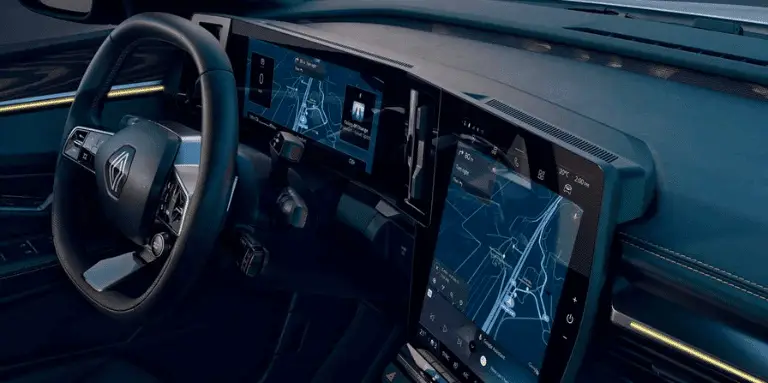

It is worth noting that the Renault, with its ultra-modern cockpit, is a little different in that it has a screen positioned in portrait modewhile ID.3 proposes a more common landscape screen. In addition, there are physical buttons positioned below the Mégane e-Tech screen, including menu shortcut keys and heating and air conditioning controls. The infotainment system has been developed in collaboration with Google, making navigation planning extremely simple. The touchscreen reacts without delay, and is a clear step forward compared with the systems in the brand's previous vehicles. Menu navigation has also been designed to be pleasantly simple to use. The large standard 20 inches of the car, but also its high waistline, give the compact electric exactly 4.2 metres a much more voluminous appearance than it actually is.
Weakness: narrow windows, particularly at the rear, don't really make it easy to see the whole picture. However, the optional rear view mirror with reversing camera display can easily remedy this problem.
Highlight: the very good finish and largely high-quality materials. The numerous storage compartments and large shelves, particularly in the centre console, are very practical for everyday use.
On the other hand, occupants have slightly less freedom of movement than in the Volkswagen ID.3 or another model in the same range of electric compacts as theHyundai KonaThis is mainly due to the reduced interior width. On the other hand, it is interesting to note that the boot of the Renault Mégane e-Tech has a greater capacity than its German competitor. As we'll see in more detail later, it is more voluminous and spacious.
A good dose of practicality
La Renault Megane E-Tech Electric and the Volkswagen ID.3 measure approximately 4.2 m longThis makes them slightly shorter than an equivalent combustion-powered car such as a Golf. Despite this slight reduction in length, both cars offer space volumes comparable to a conventional family car. This is partly due to the long serifs for the two electric models (the length between the front and rear axles) of 2,68 m for the Renault and 2,77 m for the Volkswagen. They free up interior space for passengers.
Similar dimensions

Obviously, you can't expect dimensions worthy of the largest electric vehicles in its range. On the other hand, the ID.3 and the Mégane E-tech both offer a completely flat floor, which means that considerably improves legroom. They provide adult passengers with more than reasonable space for longer journeys. The Volkswagen particularly spoils rear passengers with a freedom of movement that is unheard of in the compact class. 26 centimetres of legroom. The boot has sufficient volume, and the adjustable load floor can also be raised to the height of the load sill. The seats offer good support, are comfortable and don't cause any back problems. The steering wheel is adjustable in length and height, so you can find the optimum ergonomic seating position.
La Volkswagen ID.3 needs very little space to turn around. The front wheels can be turned widely thanks to the rear-wheel drive, and the small turning circle of 10.2 metres makes it easy to turn the car around.ID.3 extremely manoeuvrable. Another strength of the electric carIts dynamic driving dynamics: precise steering that's extremely safe to drive.
Also worth reading ⇒ The electric Volkswagen ID.3 marks Volkswagen's return to the electric scene
France leads Germany in transport capacity
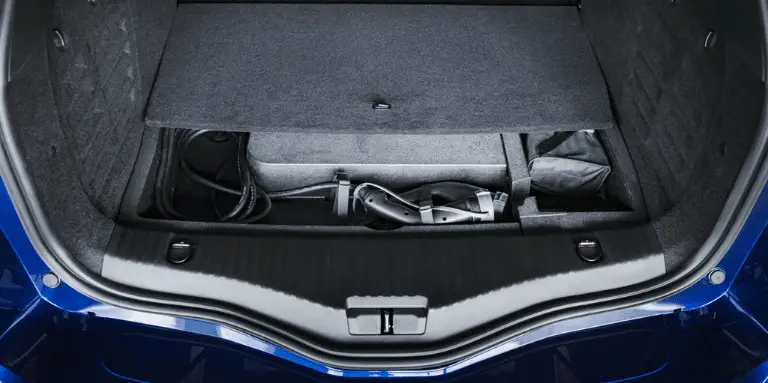
As seen above, the two electric cars have the following characteristics are fairly equivalent and are very well positioned in terms of quality and passenger transport. Luggage transportation and boot capacity are very important features, and are taken into account a great deal by drivers when purchasing a vehicle in the electric compact range. In this respect, Renault has the advantage on paper, particularly when it comes to luggage transport. But despite everything, theID.3 has no reason to be ashamed of a boot capacity of 385 litres rivalling that of the Golf. This is remarkable given that the car's electric motor is housed under the boot floor. The Renault wins out with a much greater load capacity of 440 litres.
The dimensions of the two electric cars are very similar.
95 cm wide, 73 cm long and 81 cm high for the Mégane e-Tech and 102 cm wide, 78 cm long and 75 high for the ID.3 . Unlike some other electric cars, however, the Renault and Volkswagen offer a boot at the front, occupying the place where the engine compartment is normally located on a conventionally powered car.
Some technical specifications
| Renault Megane e-Tech EV60 | Volkswagen ID.3 Pro Performance 58 kWh | |
|---|---|---|
|
Engine power
|
160 kW
|
150 kW
|
|
Number of horses
|
218 hp
|
204 ea
|
|
Autonomy
|
450 km
|
416 km
|
|
Battery power
|
60 kWh
|
58 kWh
|
|
AC load power wallbox
|
22 kw
|
11 kW
|
|
AC recharge time
|
3h15 min
|
6h15 min
|
|
Fast charge power
|
129 kW
|
124 kW
|
|
Fast recharge time
|
30 minutes
|
31 min
|
|
0 to 100 km/h
|
7.4 sec
|
7.2 sec
|
|
Fuel consumption (WLTP)
|
16.1 kWh/100 km
|
15.6 kWh/100 km
|
|
Maximum speed
|
150 km/h
|
160 km/h
|
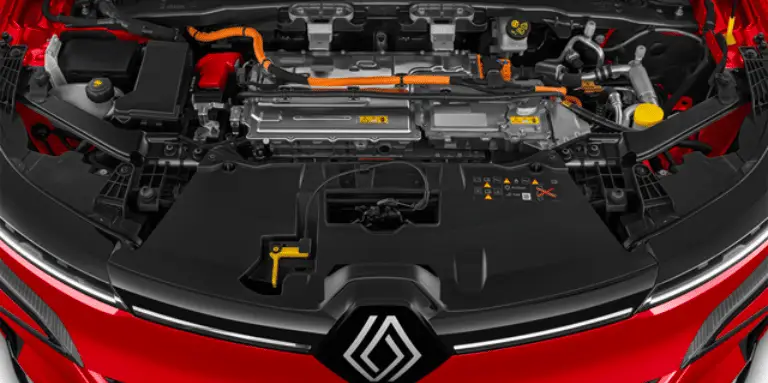

Renault Megane E-Tech vs Volkswagen ID.3: key facts
These two electric cars offer very attractive options if you're looking to swap your current combustion-powered family car for an equivalent electric model. They are perfect for families. However, if you need an electric car that can travel many kilometres without needing to be recharged, then theID.3 is certainly more suitable than Mégane e-Tech. Nevertheless, the largest ID.3 battery is reserved for a top-of-the-range finish, so you'll have to opt for the highest-priced model.
For its part, the Renault Megane E-Tech promises on paper to be a close alternative to Volkswagen. The areas where it has an advantage will be in terms of size and space rather than performance. These could be serious advantages that will tip the balance in your decision between the two. compact.
So you know all about ID.3 and the Mégane e-Tech and their many secrets! Which of the two electric cars and why? We look forward to hearing from you!
